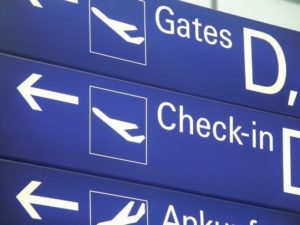Austin, Texas, is the latest city to implement the biometric passenger processing system used by the U.S. Customs and Border Protection (CBP) agency – Simplified Arrival – at its airport, continuing a rapidly growing trend at border entry/exit points and airports in US states and throughout the world.

The Austin Bergstrom International Airport (AUS) is expecting the facial recognition-based biometric system to expedite the flow of international arrivals, and some departures, from the Texas’ city’s main hub for travelers.
“We already see the benefits of the technology, not just from the compliance perspective and improving the security but also the processing of the customers and the passenger experience,” said Ghizlane Badawi, the chief operating officer at AUS, in comments to a local ABC outlet. Badawi noted that in one recent flight staff were able to use the system to process 96 passengers in half the normal time, or roughly 12 minutes.
“They can be in and out within a matter of 10 or 15 seconds,” said Richard Mendez, the Port of Austin director for CBP, and the person responsible for overseeing all international arrivals and departures at AUS. “It instantaneously matches that person. With this technology, if somebody, for example, were to get a fraudulent passport, that system would automatically identify that person,” he added.
AUS is expecting approximately 16 international flights and more than 2500 passengers every Saturday in the coming weeks and months as summer approaches.
Though the use of biometric technology in the travel sector was already gaining momentum several years ago, the ongoing COVID-19 pandemic has accelerated its growth as it presents a more hygienic, contactless solution to travelers who may be apprehensive about moving through what are typically very crowded spaces.
The system works by having travelers pause for a photo at primary inspection points, and then waiting a few seconds for the biometric facial recognition system to authenticate the picture against a photo from an official document such as a passport or visa.
In the event that the system is unable to find a positive match, a CBP officer will intervene to process them manually. Officials say that the system has so far identified at least one fake passport in Austin, while more than 1,200 fakes have been spotted throughout the U.S.
Despite its growing presence in the travel sector, concerns over the use of facial recognition technology do still exist, usually centering around the privacy rights of individuals and the use of their biometric data once it has been captured. To that point, passengers who do not wish to participate can opt out and choose a manual processing experience, though Mendez points out that any photos taken by the program are not stored for more than 12 hours.
Source: KVUE ABC
–
March 16, 2022 — by Tony Bitzionis






Follow Us